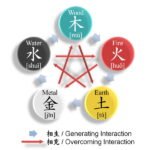
Taiwan is poised to surpass South Korea in terms of per capita gross domestic product (GDP) in 2025 for the first time since 2003, fueled by faster-than-expected export growth in semiconductors and electronics goods — long regarded as the backbone of Asia’s No. 4 economy.
The forecast brings forward by one year the expected timeline for the island state to overtake South Korea in per capita GDP by 2026, dimming the outlook for the export-driven country, already grappling with US tariff hikes that took effect in August.
In 2025, South Korea’s GDP per capita is forecast at $37,430, short of Taiwan’s projection of $38,066.
The figures are based on South Korea’s nominal 2025 GDP growth forecast, released on Aug. 22, and Taiwan’s per capita GDP forecast for the country, announced by its statistics agency on Sept. 10.
EXPORTS
There were already signs that South Korea was beginning to underperform Taiwan in exports.
Taiwan’s monthly exports overtook South Korea’s overseas shipments for the first time last month. Its exports in August rose 34.1% from a year earlier to a record $58.5 billion, while South Korea managed a modest 1.3% on-year rise to $58.4 billion in global shipments.

South Korea’s per capita GDP was estimated by applying the government’s projected nominal economic growth rate of 3.2% for this year to last year’s nominal GDP of $1.87 trillion, resulting in a nominal GDP of $1.93 billion.
The figure was then divided by the projected 2025 population of 51.69 million.
If the forecast materializes, Taiwan is likely to surpass South Korea in economic terms for the first time since 2003, when its per capita GDP came in at $14,041, compared to South Korea’s $15,211.
NARROWING GAP
The gap between the two countries’ per capita GDP has rapidly narrowed since widening to nearly $10,000 in 2018. In 2023, South Korea posted $35,129, with Taiwan close behind at $33,437.
Taiwanese’s real GDP expanded 8.01% on-year in the second quarter, marking its strongest growth since the 8.28% advance in the second quarter of 2021.
Its statistics agency in August revised up its real GDP growth forecast for 2025 to 4.45% from its earlier projection of 3.10%. It expects its domestic economy to expand 2.81% in 2026.
Real GDP measures domestic purchasing power reflecting changes in terms of trade.
Q2 GDP GROWTH
By contrast, South Korea’s real GDP grew by meagre 0.6% on-year in the second quarter. Compared to the preceding quarter, its economy expanded 0.7% in the April-June quarter following a 0.2% contraction in the first three months.
Although domestic demand has shown signs of recovery in the second half following stimulus measures, Seoul’s economy ministry in August cut its 2025 economic growth forecast in half to 0.9%.

Forecats for South Korea’s 2026 GDP per capita are based on the projected nominal GDP growth of 3.9%.
Figures from OECD refer to the average GDP per capita for its member countries.
Taiwan appears on track toward the milestone of $40,000 in GDP per capita ahead of South Korea.
Taiwan’s statistics agency forecast that its GDP per capita will hit $41,019 in 2026, surpassing the $40,000 mark for the first time in history.
By comparison, South Korea’s GDP per capita is expected to hover around $38,947 in 2026, based on its latest GDP growth forecast.
Further, its GDP per capita could fall short of the estimate. The Bank of Korea forecast the country’s real GDP to grow 1.6% in 2026, below the government’s forecast of 1.8%.

KOREAN WON VS. TAIWAN DOLLAR
The Korean won’s underperformance this year, compared to the Taiwan dollar, has further clouded the outlook for South Korean economy.
The weakness of the Korean currency drives up the cost of imported raw materials, eroding the price competitiveness of Korean products, whose prices are already under pressure from US tariff hikes
Analysts warn the gap between the two countries’ GDP per capita would continue to widen, with Taiwanese technology companies, led by contract chipmaker TSMC, taking a central role in the global AI supply chain.
South Korea’s economic growth potential is estimated to be below 2%, while Taiwan’s is projected to exceed 3%, said Park Jung-woo, an economist at Nomura Securities.
By Yeonhee Kim
yhkim@hankyung.com
Jennifer Nicholson-Breen edited this article.















